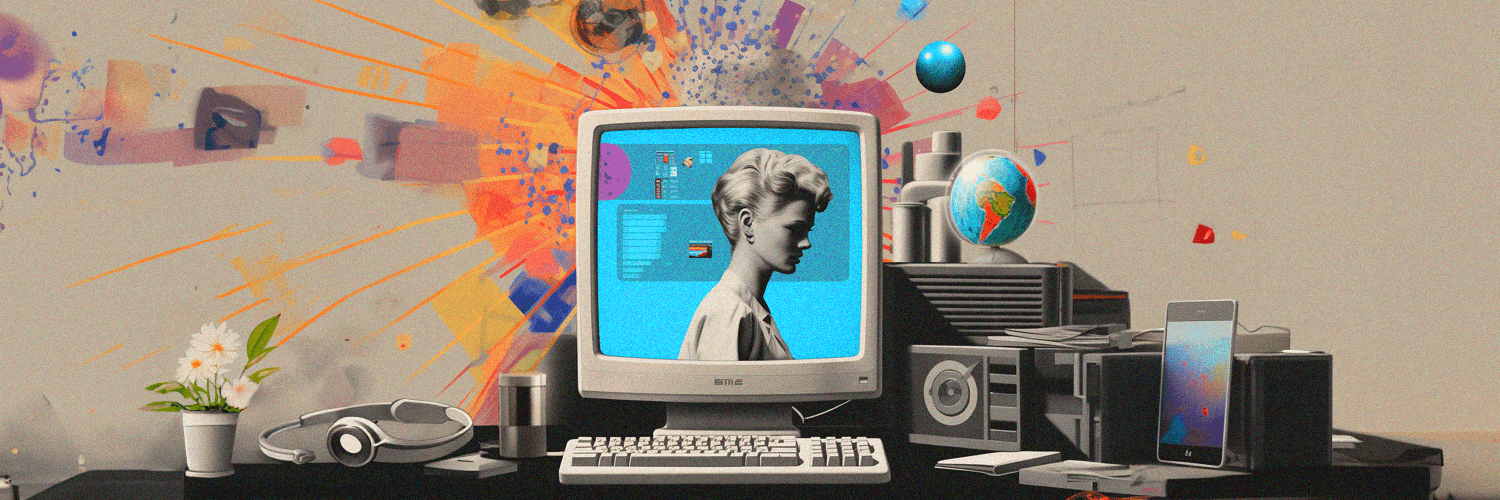Smart workplace technology is revolutionizing the way we experience workspaces.
From energy efficiency to safety measures, smart buildings are designed to meet the needs of modern businesses and their employees.
But did you know that smart workplace tech can also improve employee well-being? That's right!
By integrating features like air quality monitoring, lighting controls, and ergonomic design into workplaces, smart buildings can enhance comfort levels and promote a healthier work environment.
In this article we'll take a closer look at how smart workplace technology is changing the game for workplace wellness and explore some best practices for implementing it in your office.
So buckle up and get ready to discover the connection between smart workplace technology and employee well-being!
TL;DR:
- The introduction of smart workplace technology has made a significant difference in employee well-being.
- Through the use of sensors and other digital tools, smart buildings can help create a more pleasant work environment. That means fewer distractions, less stress and higher productivity.
- When employees have more control over their work environment, they feel more connected to their workplace and can better manage their energy levels throughout the day.
- Smart technology in buildings often incorporates wellness features such as standing desks or meditation spaces into office design, which encourages employee movement and mindfulness.
- The synergy between smart workplace technology and employee wellness creates an intelligent workspace that promotes both physical and mental health while increasing overall job satisfaction.
What Is Smart Workplace Technology?
Smart workplace technology is a network of interconnected devices and systems that work together to create an intelligent infrastructure. This infrastructure can be used for various purposes such as:
- optimizing energy consumption
- improving safety measures
- increasing efficiency and productivity
- enhancing employee well-being.
One key feature of smart workplace tech is automation. By leveraging sensors, algorithms and artificial intelligence (AI), buildings can automatically adjust settings like temperature, lighting levels or air quality based on occupants' needs in real-time.
Another advantage of smart buildings is the ability to collect data from various sources within the facility. This data can then be analyzed to identify patterns and trends that help improve decision-making processes related to building management.
Smart workplace technology also includes features like access controls, security cameras, fire alarms systems integrated with emergency response protocols that help promote safety within the workplace.
Smart workplace technology offers a wide range of benefits both for businesses looking to improve their bottom line through cost savings and increased productivity, as well as employees who benefit by experiencing a more comfortable work environment.
.png?width=928&height=523&name=1%20(1).png)
Benefits of Smart Workplace Technology
Smart workplace technology offers a wide range of benefits – here are some of the most important ones:
Sustainability
One of the main benefits of using smart workplace technology is that it helps reduce energy consumption and makes buildings more sustainable an energy-efficient.
Smart buildings are equipped with advanced sensors that monitor and optimize energy consumption in real time. These sensors adjust heating, cooling and lighting systems based on occupancy levels and weather conditions to minimize wasted resources and ensure your facilities only use energy when it's needed.
Moreover, smart workplace technology enables precise control of resource management by providing insights into electricity or water usage. Smart meters keep track of everything and help identify areas where energy consumption can be further reduced to reduce environmental impact.
In addition to conserving natural resources such as water and energy, sustainable smart buildings can also reduce carbon emissions that contribute to global warming.
They often offer a range of environmentally friendly features such as green roofs or walls and renewable power sources like solar panels or wind turbines.
Improved Security
Smart workplace technology does not just promote sustainability and enhance occupant comfort; it also improves security through remote monitoring capabilities.
With 24/7 surveillance cameras installed around the facility linked with artificial intelligence (AI), any suspicious activity can be detected immediately, preventing potential threats from escalating into critical security incidents.
From enhancing sustainability efforts to improving comfort while increasing safety measures – these substantial gains make investing in smarter buildings worthwhile for everyone involved.
And then there’s employee well-being…
Employee Well-Being
Smart workplace technology enables employers to create a more comfortable work environment by adjusting lighting, temperature, and air quality based on real-time data.
This helps reduce eye strain, headaches, fatigue, and other common health issues associated with working in an uncomfortable setting.
In addition to creating a more comfortable workspace, smart workplace technology can also help reduce stress levels among employees.
For example, automated systems can take care of mundane tasks like scheduling meetings or ordering office supplies so that employees have more time to focus on important tasks.
Implementing smart workplace technology has become more and more important for businesses looking to improve their bottom line while prioritizing employee wellness.
With its ability to create a healthier workplace environment through automation and advanced technologies, it’s no surprise that many forward-thinking companies are investing in this innovative approach.

Smart Workplace Technology in Action: The Case of Employee Well-Being
What is smart building? Well, if you ask us, smart building refers to using tech to improve residents’ or employees’ well-being, and there are several examples of smart buildings around. To mention a few:
One example is the Delos Headquarters in New York City, designed to actively nurture people’s well-being and health as well as address environmental sustainability goals. The building may be located in the middle of the city, yet it’s surprisingly close to nature thanks to the green office design and smart workplace tech.
This includes not only the lush planting of the terraces and interior spaces – the entire headquarters was designed sustainably. features circadian lighting that mimics natural light cycles, providing employees with a healthier work environment.
Another example of a smart technologies building is the Edge Building in Amsterdam – quite possibly the smartest office space ever constructed! The building uses sensors to monitor temperature, air quality, and occupancy levels to optimize conditions for workers' comfort and productivity. The building also includes a rainwater collection system for sustainable water usage!
Smart workplace tech can also be used to promote physical activity among employees. For instance, the Samsung Digital City campus in South Korea – which might as well be a city! – has staircases placed near elevators and designated walking paths that encourage movement throughout the day.
Smart workplace technology plays an essential role in promoting employee well-being by creating healthy environments that enhance comfort and productivity while reducing negative environmental impacts.
Possible Challenges of Implementing Smart Workplace Technology
Implementing smart workplace tech can bring about numerous benefits, but it also comes with its fair share of challenges.
High Costs of Implementation
One significant challenge is the cost involved in upgrading existing buildings to incorporate new technologies. It often requires a substantial investment upfront, which may deter companies from adopting this technology.
Integration Issues
Another challenge is the integration of various systems within a building. Smart technologies work best when integrated seamlessly and function as one cohesive system; however, integrating different systems can be difficult and time-consuming.
Data Security Concerns
Data privacy and security issues are another concern when implementing smart workplace technology. The data collected by these systems could potentially be compromised if not adequately secured or protected against cyber attacks.
User Adoption
Ensuring that employees understand how to use these new technologies in the workplace effectively is key for their success. Employees need proper training on how to operate these new systems so that they can benefit from them fully and give relevant feedback when needed.
Regular Maintenance
Regular maintenance and updates are necessary for optimal performance of smart workplace technology solutions. This means allocating resources towards maintenance costs over time – an important consideration before investing in any new technology, after all.
While there are challenges associated with implementing smart workplace solutions, these obstacles do not negate the many benefits that come along with creating efficient workplaces and boosting employee wellness through innovative technological upgrades.
.png?width=928&height=523&name=2%20(2).png)
Best Practices for Implementing Smart Workplace Technology for Workplace Wellness
When it comes to implementing smart building technology for workplace wellness, there are some best practices that should be followed:
Identify the Specific Needs of Your Organization
One of the most important is to start by identifying the specific needs and goals of your organization. This will help you determine which technologies will be most effective in improving employee well-being.
Remember, by investing in smart technology that puts employee well-being and safety above all else, you're creating an inclusive work environment where everyone can thrive both personally and professionally – but it's always best to find out if they need something specific ASAP.
Get the Employees Involved
For that reason, it’s a good idea to involve employees in the process as early as possible.
By soliciting feedback and input from your employees, you can ensure that the technology solutions you choose meet their needs and preferences and aren't just generic. You want to know that your investment is making a difference, after all.
It's also important to provide adequate training so that employees know how to use new devices or systems effectively, and can give you genuinely helpful feedback based on their experiences with them.
Know Your Priorities
Prioritize smart building features that directly impact employee health and well-being.
With the rise in awareness about the importance of mental and physical wellness, employers are realizing that providing a healthy work environment can have positive effects on productivity, job satisfaction and retention rates.
The keyword here is "directly impact" as it means choosing features that have an immediate effect on employees' health such as air quality sensors, lighting controls, noise reduction or ergonomic furniture.
These features not only enhance employee comfort but also boost their performance levels by reducing stress levels and preventing fatigue. The results? More work gets done, quicker – and better!
Monitor Results Regularly
When it comes to implementing smart buildings technology initiatives, it's important to continually evaluate their success over time through regular monitoring and data analysis.
This will allow you to gain valuable insights into the effectiveness of these initiatives and make necessary adjustments to ensure they're meeting the needs of occupants – while also helping reduce energy consumption and costs.
Through ongoing monitoring and analysis, key performance indicators such as energy usage, indoor air quality, occupant satisfaction levels, and maintenance costs can be tracked and compared against established benchmarks or goals.
This information can then be used to identify areas for improvement or optimization within the building systems or processes.
Communication Is Key
Whether you are implementing a new energy management system or enhancing the security features in your building, keeping employees informed and engaged is key to maximizing the benefits of these initiatives and ensuring that everyone is taking advantage of them.
Moreover, regular communication can help identify any issues before they become major problems and enable employees to provide feedback that improves outcomes over time. Do they like the new tech? Do they find it useful? Should you invest in similar solutions in the future or take a different approach?
Prioritize frequent communication as part of your overall strategy for success!
Conclusion
By implementing and continuously evaluating the success of smart building initiatives over time, you can maximize efficiency while improving employee comfort – and what are smart buildings if not buildings that use brand new tech to make people's lives better, easier and more productive?
Now over to your: Is there anything your organization could particularly benefit from? If the answer is "I'm not sure!" could your employees help you decide on the next best investment? We're eager to hear what new technology might help you achieve your goals!








